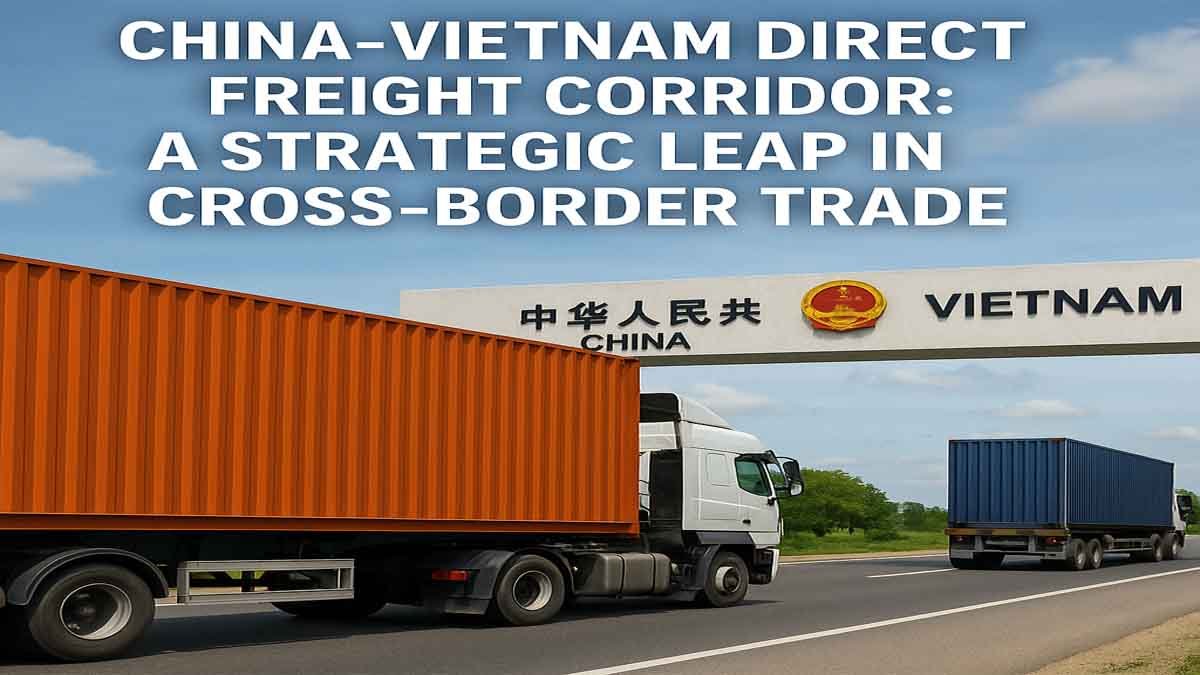The inauguration of the China-Vietnam direct road freight route marks a significant milestone in regional logistics and economic integration. This development not only enhances bilateral trade but also exemplifies the strategic collaboration between the two nations under the Greater Mekong Subregion Cross-Border Transport Facilitation Agreement (GMS-CBTA). This initiative is a critical step towards seamless cross-border trade, reducing logistical friction, and boosting economic growth in the region.
The Need for Efficient Cross-Border Logistics
As regional economies become increasingly interconnected, the need for efficient, reliable, and cost-effective logistics solutions has never been greater. China and Vietnam, as two of the fastest-growing economies in Asia, are leading this transformation. The direct freight route, launched on May 14, 2025, serves as a vital link between China’s southwestern industrial hubs and Vietnam’s thriving manufacturing sector.
This route facilitates the direct movement of goods, including electronic components, fresh agricultural produce, and daily necessities, from Nanning, Guangxi Zhuang Autonomous Region, and Kunming, Yunnan Province, to Hanoi, Vietnam. This new corridor significantly reduces transportation times and costs, benefiting businesses on both sides of the border.
Key Features and Operational Efficiency
The adoption of a “single-container, single-vehicle” model is a key innovation of this route. This approach ensures that goods remain in the same container and vehicle throughout the journey, minimizing cargo handling and potential delays at the border. This model not only cuts down transit times by approximately one day but also reduces transportation costs by 800 to 1,000 yuan ($110 to $140) per shipment.
Moreover, this direct route supports higher cargo integrity, reduces damage risks, and enhances the predictability of delivery times. These improvements are critical for industries relying on just-in-time (JIT) inventory systems and high-value goods, making this corridor particularly attractive to electronics manufacturers, exporters, and importers.
Economic Impacts and Strategic Significance
The direct freight route between China and Vietnam is more than just a logistical advancement; it represents a strategic economic alignment. It strengthens bilateral trade relations and supports the broader goals of the Belt and Road Initiative (BRI) by fostering greater economic cooperation within the region. This route is expected to significantly increase trade volumes, enhance supply chain resilience, and support regional economic stability.
Additionally, this route positions both countries to benefit from the rapidly growing demand for cross-border e-commerce and time-sensitive goods, further solidifying their roles as critical players in the global supply chain.
Conclusion
The launch of the China-Vietnam direct road freight route represents a pivotal advancement in regional trade infrastructure. By reducing transit times and costs, it enhances the competitiveness of bilateral trade and exemplifies effective international cooperation under the GMS-CBTA framework. This development not only drives economic growth but also reinforces the strategic partnership between China and Vietnam, creating a robust foundation for future collaboration.
As global trade continues to evolve, initiatives like this will play a crucial role in shaping the economic landscape of Asia and beyond. For businesses and policymakers alike, the success of this direct freight route serves as a powerful reminder of the importance of strategic infrastructure investments in a rapidly changing world.










